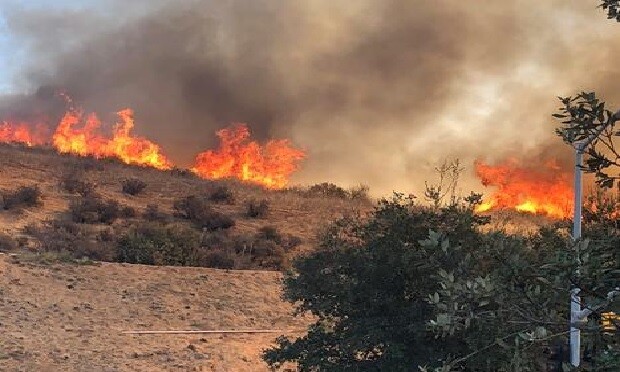It is estimated that there are over 15 million acres of contaminated land in the U.S. alone, according to the National Renewable Energy Laboratory. This land includes landfills, former industrial and coal sites, and other types of brownfields. Although these properties can be a financial burden to their owners, repurposing them into solar projects can turn these liabilities into assets. Converting brownfields to solar not only reshapes unused and contaminated land into revenue for the owner, it also reduces dependence on fossil fuels, reduces electricity costs, helps to meet clean energy goals, and assists in job creation.
Why are Brownfields Ideal Candidates for Solar?
A brownfield, defined as a former industrial or commercial site with potential contamination, has very few viable uses and even fewer that are profitable. The 450,000+ brownfields in the U.S. frequently occupy large tracts of land that are located far from populated urban areas. For typical real estate development opportunities, this situation is hardly ideal. However, brownfields are a great fit for solar developments since having at least 5 or more acres of clear land helps to make them financially worthwhile. With solar development costs being the lowest they have ever been and the various regulatory options and incentives available, solar is an excellent option for these otherwise unused lands.
Former Industrial Sites typically have a number of solar-friendly features.
- They are almost always located near grid infrastructure (like electrical transmission lines, high-capacity interconnection points, or electrical substations), which reduces solar development costs.
- They also are usually located near other industrial sites, like factories, which have substantial energy demands. This often translates into customers for solar energy, particularly behind-the-meter.
- When a contaminated industrial site is remediated, it is typically cleared of all structures, meaning that there is ample flat land with no shading obstructions.
- These sites are likely already zoned in a way that would allow for solar development. This can be a major time- and cost-saving factor during the permitting process.
Landfills that have been closed and capped also provide opportunities for solar development.
- Landfills are often located away from populated areas on unshaded land; lack of shading being ideal for solar sites to produce maximum energy production.
- These properties have very few alternative uses. Leasing this land for solar can create long-term revenue stream for both privately-owned and publicly-owned landfills.
As renewable forms of energy continue to supplant fossil fuels from both an economic and environmental standpoint, more and more coal plants are being shut down. In fact, close to 17% of U.S. coal generation capacity was retired between 2008 and 2016, according to the Union of Concerned Scientists (UCS), and 95% of the retired coal plants have not been remediated or repurposed.
Unused Coal Sites tend to be significant liabilities for their owners, usually a utility company or independent power producer (IPP). Unfortunately, costs associated with their ongoing maintenance will trickle down to the ratepayers, so converting coal sites into solar power plants offers owners some great advantages.
- Owners can reduce greenhouse gas emissions and meet their climate goals.
- It allows them to continue to provide energy to their customers.
Regulatory Assistance for "Brightfield" Development
Transforming brownfields into solar power plants isn't just good for the landowners, it's good for everyone. This is a big reason why government agencies have stepped in to make the process smoother and less expensive. In fact, the Department of Energy (DoE) created a new term to define these properties: Brightfields.
Various regulatory efforts have been made to encourage the repurposing of brownfields for solar. More than 80,000 brownfield and landfill sites have already been prescreened by the Environmental Protection Agency (EPA) for suitability as renewable energy generation facilities, including utility-scale solar. The EPA also has programs like the RE-Powering America's Land Initiative, that are specifically dedicated to reducing costs associated with the acquisition of land. This program helps make the permitting and regulatory approval process go more smoothly and assists with financing so owners can take advantage of renewable tax incentives. Other existing EPA programs, like CERCLA and RCRA, are designed to protect landowners from liability associated with the historic use of the properties. According to the EPA website, the repurposing of brownfield sites has led to the creation of more than 97,000 jobs and increased residential property values from 5% to 15.2%.
Even at the state and local level there are a wide range of different programs designed to foster brownfield redevelopment. In New York City, environmental engineers, attorneys, and city planners will provide free consultations regarding remediation as part of the Brownfield Partnership. In Oakland, California there is a revolving loan fund dedicated to assisting with brownfield remediation projects. Some states have programs intended to financially incentivize brightfields, like the Massachusetts SREC program and New Jersey TREC program, both of which pay out higher to brightfields than to rooftop or greenfield (historically undeveloped) solar projects.
Most state and local governments and even utility companies have clean energy targets they are working to meet, often referred to as Renewable Portfolio Standards (RPS). Although these targets are often mandated, regulatory bodies will continue to create incentives and pathways for brightfields because they help producers to achieve these goals.
Analyzing Risk – Is the Juice Worth the Squeeze?
Despite the many benefits of converting brownfields into solar developments, not every brownfield is going to "pencil out" from a financial perspective. Each property needs to be analyzed on a case-by-case basis, so working with knowledgeable solar consultants experienced in brownfields is important.
The first step when considering solar on a potentially contaminated site is a Phase I Environmental Site Assessment (ESA). An ESA will determine the level of contamination, the status of remediation, what permits and approvals (if any) will be required, and whether the state has issued a No Further Action (NFA) status or if there is ongoing testing being conducted. If there are any financial or regulatory obligations that are associated with the property, an ESA will identify them and provide recommendations for compliance.
Many brightfields are also located on land where the development needs to avoid any penetration or disturbance to the subsurface. In these cases, developers can use ballasted racking systems, rack-mounted wire management, or a number of other alternative solutions instead of burying the electrical wiring or driving posts into the ground for the solar racking system. These alternatives can be more expensive, so proper budgeting is important.
In the event that additional remediation is required prior to solar development, having financial models that account for these costs is essential. In fact, several other factors should be taken into consideration such as the amount of solar that can fit on the site and the proximity to grid infrastructure. When it comes to financing, it may also be prudent to work with lenders with brownfield experience as they can help ensure the project takes advantage of all available incentives and liability protections.
Lastly, is timing. The timeline of repurposing a brownfield into a brightfield is likely much longer than a typical solar development. The time between when the brownfield site is initially assessed and when it is shovel-ready can be anywhere from 18 months to several years. Longer timelines also mean that the costs of equipment and the available incentives at the start of the project may not necessarily still be applicable at the end.
There is no doubt that the brightfield market comes with its share of complexities, however, educated and prepared project owners have ample opportunities and incentives they can take advantage of.
Case Studies
Below are a few examples of landfills which have been developed into solar energy generating facilities utilizing poured-in-place concrete ballasted racking systems in order to avoid disturbing the subsurface contaminants. In most of the examples below, the energy generated was purchased by the Town and used to provide renewable electricity to local residents on land that would otherwise have remained undeveloped. The contaminated lands were converted into useful and profitable assets, creating power without pollution or impacts to the environment.
- Dewitt Landfill Solar – 2.7 MW solar installation on a former landfill in the Town of Dewitt, NY. The PV system was completed in 2020 and is projected to save the town over $2 million in electricity costs over the life of the system while offsetting 2,605 metric tons of carbon dioxide.
- Kings Park Landfill Solar – 6 MW solar installation on a former landfill in Long Island, NY. The site was used as a municipal landfill from 1970 to 1979 and was developed as a golf course in 1999. The solar project was completed in 2019 and sells its power sold to the Long Island Power Authority (LIPA) under a 20-year Power Purchase Agreement (PPA). Over that time, it is estimated to generate over $800,000 in lease revenue for the town while offsetting 4,500 metric tons of carbon dioxide.
- Hillsboro Landfill Solar – 9 MW solar installation on a capped landfill in the Town of Hillsborough, NH. The Town is leasing the land, creating a revenue stream, in addition to receiving a rebate from the owner of the solar array. This project was estimated to create $1.2 million in energy savings.
These brightfields set an excellent example for similar contaminated sites across the country, providing a clear path to turn environmental liabilities into assets.
© 2025 ALM Global, LLC, All Rights Reserved. Request academic re-use from www.copyright.com. All other uses, submit a request to [email protected]. For more information visit Asset & Logo Licensing.









